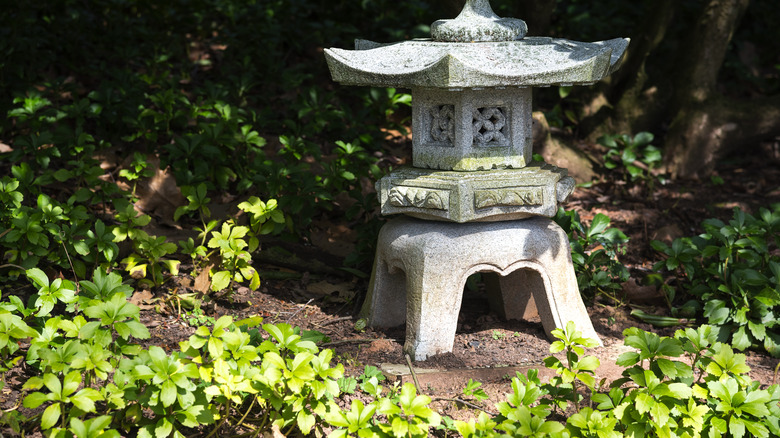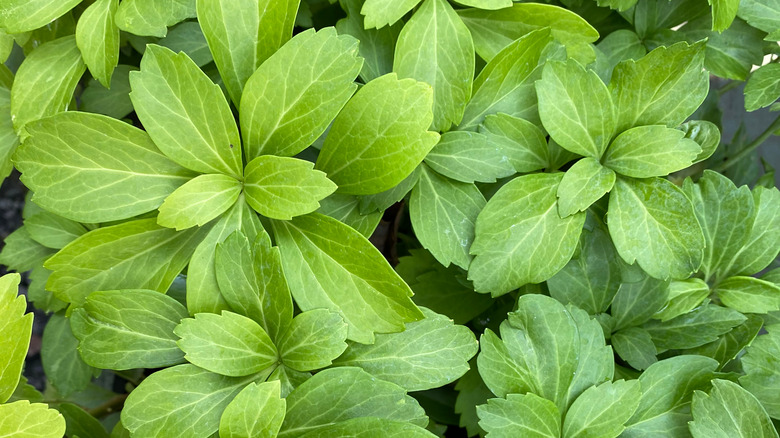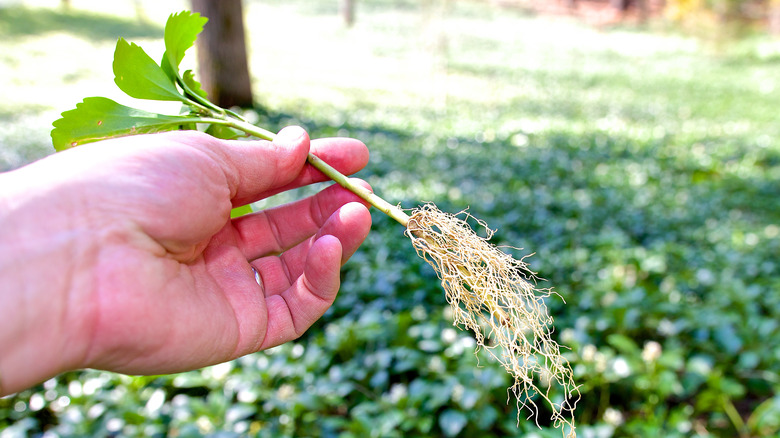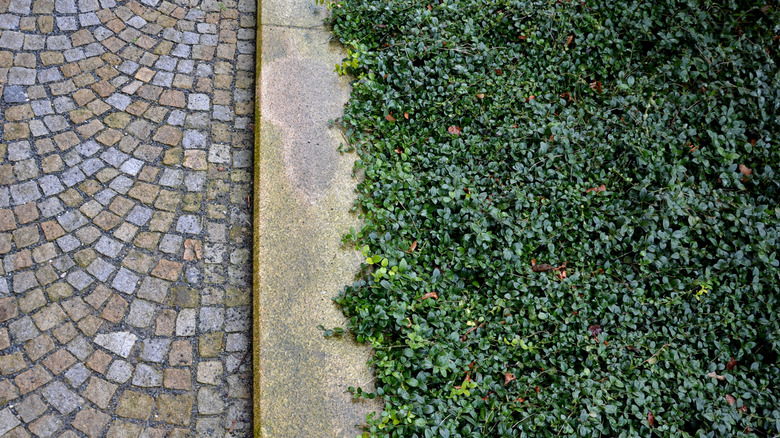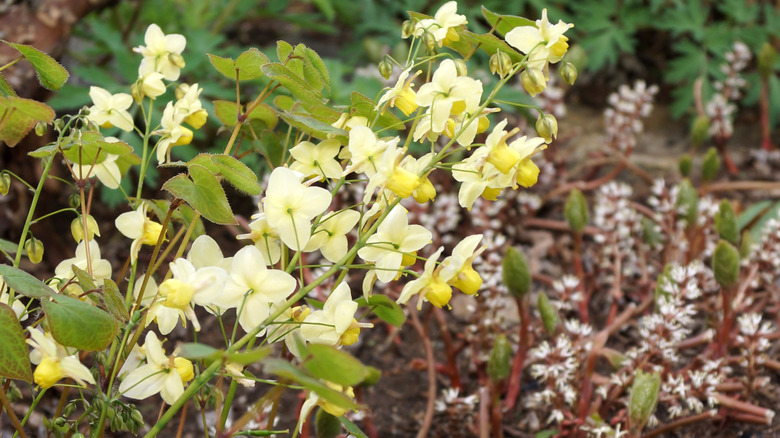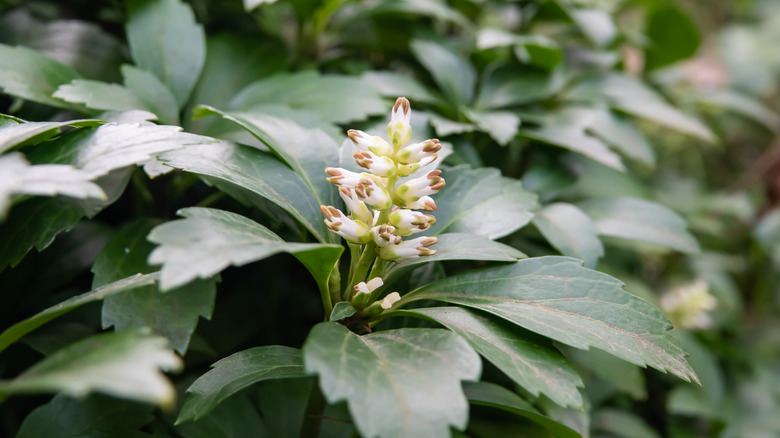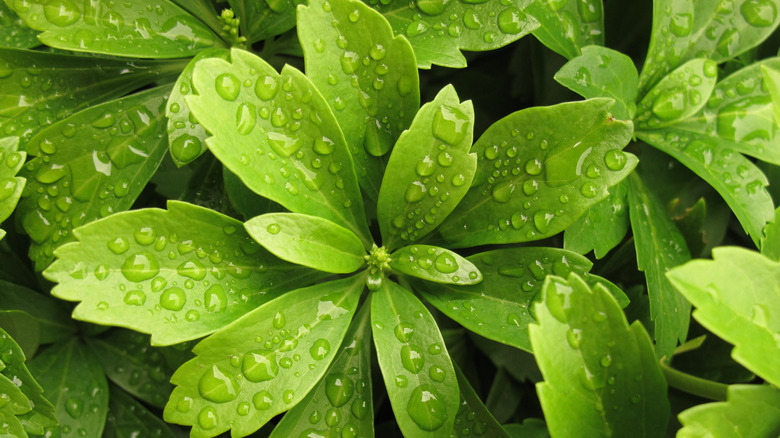Pachysandra: Everything You Should Know Before Planting
Popular Japanese pachysandra (Pachysandra terminalis) is an evergreen perennial and a member of the boxwood family, according to the Clemson Cooperative Extension. This ornamental ground cover comes in several varieties and grows throughout most of the eastern U.S. in zones 5 through 8 on the USDA Plant Hardiness Zone Map, which is based on average temperatures for a region.
Shrubby and verdant, pachysandra has stems that are green, not woody. Plants grow to be about 12-inches wide but only 6 inches high. Leaves are about 2 inches long by 1 inch wide, and end in an attractive, curving saw tooth pattern. The tough, leathery leaves remain green throughout the year, although they tend to wither in the coldest weather. In spring the plants sprout small, fragrant white flowers, some of which produce tiny, juicy seeds.
An amazing and versatile plant, pachysandra is hardy and low-maintenance. To bring a touch of lush greenery into your yard and garden, here's everything you should know before planting pachysandra.
How to use pachysandra in garden
Pachysandra is ideal for lush ground cover, especially in tough-to-grow areas, says NC State Extension. Its preference for full or partial shade allows it to address several problems in the average yard, such as bald or patchy bare spots under trees and shrubs. Any spot where a beautiful green bed would be welcome, but grass would be tough to grow and maintain, is the perfect spot for pachysandra: around old tree stumps, a camouflage in front of bare patio steps, or under a bench in a shady corner.
Beds of pachysandra spread horizontally through underground stems, which are called rhizomes. Extremely hardy, not much affects the plant, and often it spreads freely, sometimes invasively. Established beds will expand quickly without some tough-love trimming and thinning. The plant can also work as erosion control in places like hillsides with uneven ground. The sturdy, interconnected root system provides a kind of netting to the soil that supports the plants.
How to grow pachysandra
Pachysandra seeds are available from specialty garden centers and greenhouses, but growing pachysandra from seed is a slow process. An easier, faster way to plant a bed of pachysandra is by the cutting method, according to Trees.com.
Cut a 4-inch stem from a healthy plant just below a leaf clump, either from a bed you already have, or borrow from a neighbor. Fill a pot with moist soil and dig a small hole. Some gardeners dip the cutting in a rooting hormone, but this is optional. Keep the pot with new seedlings in a warm but shady spot and allow six weeks for the roots to develop before transplanting to the prepared bed in your yard.
Flats of pachysandra are also available at garden centers. These plants come with a plug of dirt protecting their roots. Clear the ground of any weeds or debris, and loosen the top few inches of soil. Dig a small hole, plant 10 to 12 inches apart, and water lightly. Allow four to six weeks for the root system to develop.
Finally, SFGate explains how the division method offers the visual coverage desired almost right away. Gently dig out a clump, roots and all, and separate into smaller clumps. Plant directly into the garden bed. Roots are established when the plants start giving off new leaves, and also when resistance is felt when tugging gently on the newly planted pachysandra.
How to care for pachysandra
Unlike many plants, pachysandra should not be planted in full sunlight. The National Gardening Association indicates these plants prefer shady spots in well-drained, slightly acidic soil, but will also grow in more adverse conditions, such as heavy clay soil. If you must plant pachysandra in a sunny spot, aim for a place that gets morning sun and afternoon shade to allow the leaves to rest. Beds underneath trees, on the shady northern side of a house or garage, or underneath low shrubs like azaleas or rhododendrons are perfect. However you establish the bed, once the roots are in place, pachysandra is a nearly carefree addition to your yard.
Pachysandra does not need regular fertilization, pruning, or even regular maintenance. Once established, it simply grows and looks good. Water lightly if the average rainfall is below normal or if the plants look wilted. In fall, rake out any dead leaves between the plants to prevent too much moisture from accumulating on the leaves, as moist conditions can lead to rot. To keep the bed the shape and size you want, simply cut back stray tendrils of the roots and propagate elsewhere or give to a friend. Simple pruning as the plants spread out will keep the bed in good shape.
Varieties of pachysandra
Pachysandra comes in several varieties, all non-climbing evergreens, all good ground cover, and all green and leafy in their appearance, according to the University of Arkansas' Division of Agriculture. Varieties include Green Sheen, which has leaves that look polished, with a high gloss finish. Green Carpet's leaves are smaller and the plants more compact overall within the bed. Variegata has a white outline on the outside of its leaves, contrasting well with the other varieties. There are also Green Sheen Crinkle, Silver Edge, and Green Carpet, plus other variations grown by nurseries such as JW Pachysandra, throughout the country.
"Regular" pachysandra is sometimes compared to a lesser-known American cousin called Allegheny spurge or Pachysandra procumbens, a plant native to the southeastern U.S. states. This plant forms clumps rather than mats over a given area. The Ohio State University's Buckeye Yard & Garden Online describes Allegheny pachysandra; it's not quite as popular as the Japanese variety, has green leaves that turn blue-green in summer, and after flowering the plant's leaves mottle, adding a touch of white to the leaves.
Is pachysandra toxic?
Illinois Wildflowers indicates that pachysandra leaves are both deer and rabbit resistant as the foliage is toxic (not fatal) to plant-eating mammals. The rare seeds produced by spring blooms are eaten by mice and birds, and help propagate the plants in new areas. Additionally, pachysandra is not toxic to humans or house pets such as dogs or cats, making it an ideal plant for placement throughout the yard and close to houses and play areas.
For as pretty as the dark green leaves are, pachysandra is not meant for container gardening. The possible exception is using one lone spike of it as an accent, but pachysandra will not drape or trail like vinca or another vine. Additionally, since the roots grow and colonize, a colorful pot filled with flowers could soon be overwhelmed by nothing but pachysandra. For this reason, to propagate the plant, use the cutting method working with a pot dedicated to rooting the pachysandra stems.
Pachysandra pests and diseases
Volutella is a common boxwood disease that affects pachysandra leaves and stems, says Western Pennsylvania's Trib Live. A diseased plant stands out in spring, with yellowing stems that eventually dry out and die. Prune the sick plants and carefully clean your tools before using them in other areas of the garden. Better Homes & Gardens mentions that leaf blight is another common problem for pachysandra. Here, the plant shows spotting on its leaves from being splashed with water. Leaf blight will weaken plants but not kill them. Treat with a general fungicide and remove the plants most affected.
A third pest is scale or euonymus scale. Here, an insect covers the leaves, and in eating up the plant's juices, leaves behind a waxy coating, eventually smothering the plant. Scale is hard to control, and tearing up the bed and starting over may be the only solution. However, in general, pachysandra is not only a tough cookie but disease resistant. Often, they are passed over by disease, fungal infections, and insects because surrounding plants are more delicate and vulnerable.
